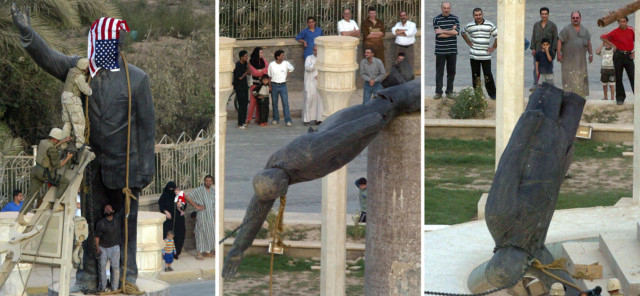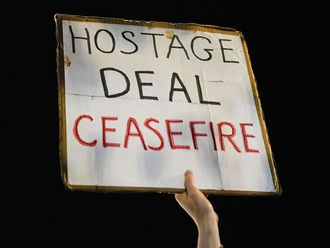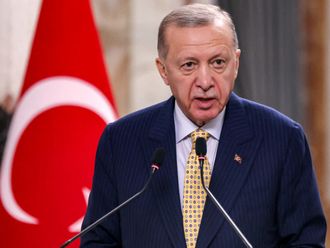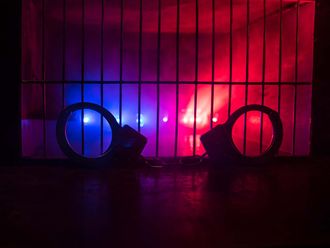
Baghdad: Iraq on Tuesday was low key as it marked a decade since US-led forces took control of Baghdad, sealing the ouster of Saddam Hussain’s brutal regime, but the country remains plagued by attacks and mired in crises.
Remembered the world over for the iconic images of Iraqis pulling down a statue of Saddam in central Baghdad’s Firdos Square - helped in no small part by an American military unit - the fall of the capital is a far more emotive day in Iraq than the anniversary of the invasion itself weeks earlier.
The day the statue fell on April 9, 2003, Saddam’s vaunted army had largely melted away, and was seen as defeated and demoralised.
But the sense of elation felt by many Iraqis that day, at seeing a dictator who had ruled for more than two decades fall, was matched by a feeling of bitterness among others who felt their country had been occupied by a foreign power.
Those divisions in how April 9 is seen within Iraq have spurred the government to eschew any formal commemorations, and unlike in previous years, only the autonomous northern Kurdistan region is marking the occasion with a public holiday, rather than the entire country.
“Despite all the problems of the past decade, the overwhelming majority of Iraqis agree that we’re better off today than under Hussain’s brutal dictatorship,” Prime Minister Nouri Al Maliki wrote in the Washington Post.
“Iraqis will remain grateful for the US role and for the losses sustained by military and civilian personnel that contributed in ending Hussain’s rule. These losses pale by comparison, of course, to those sustained by the Iraqi people.”
Though the war itself was relatively brief - six weeks after foreign troops invaded, then US president George W Bush infamously declared mission accomplished - its aftermath was bloody and fractious.
Caught between Shiite militia groups and Sunni insurgents, US and coalition forces paid a heavy price: some 4,800 foreign troops died in Iraq, more than 90 per cent of them American.
Iraqis suffered even more
Britain-based organisation Iraq Body Count recently estimated at least 112,000 Iraqi civilians died in the decade after the invasion, while thousands of soldiers and policemen were also killed.
And along with the still-present violence, the country continues to suffer from near-constant political crises typically attributed to a stalled reconciliation process.
Ministers appeared to take a key step in that process this month, however, by unveiling sweeping reforms of laws barring those with links to Saddam’s regime from participating in public life.
The draft amendments to the De-Baathification law, however, are likely to face strong opposition in parliament, which needs to approve the proposals.
Tuesday’s anniversary also comes at a significant political juncture in Iraq, barely 10 days ahead of provincial elections, the country’s first polls since US troops withdrew at the end of 2011.
The credibility of the vote has been drawn into question as a result of still-high bloodshed - a dozen candidates have been killed - and by a cabinet decision for a partial postponement that means only 12 of the country’s 18 provinces will go to the polls.
Though markedly less powerful than in their 2006 and 2007 heyday, militant groups - particularly Al Qaida front group the Islamic State of Iraq - also remain capable of mounting mass-casualty attacks, and often target Shiites and the security forces in a bid to destabilise the country.
The violence is frequently blamed on political disputes between Al Maliki, a Shiite, and many of his erstwhile partners in Iraq’s unity government, allowing militants to exploit divisions on the ground which give them room to manoeuvre.











